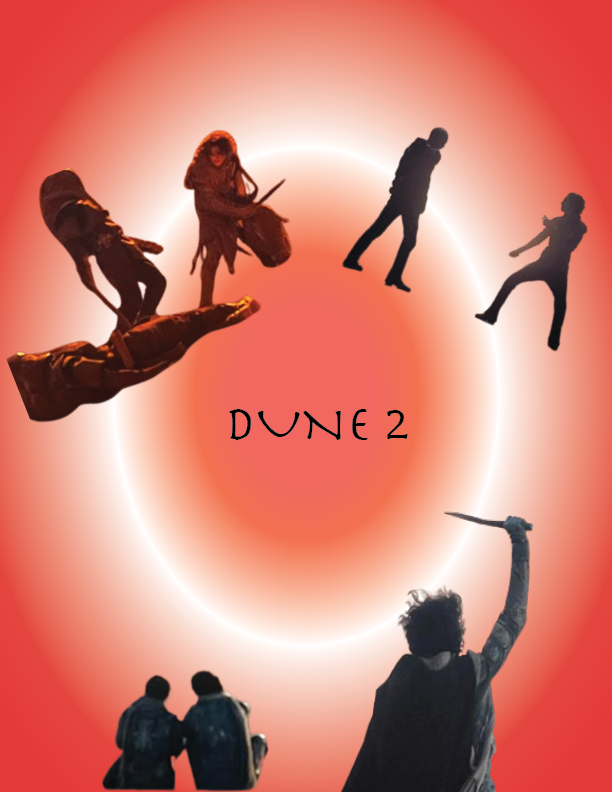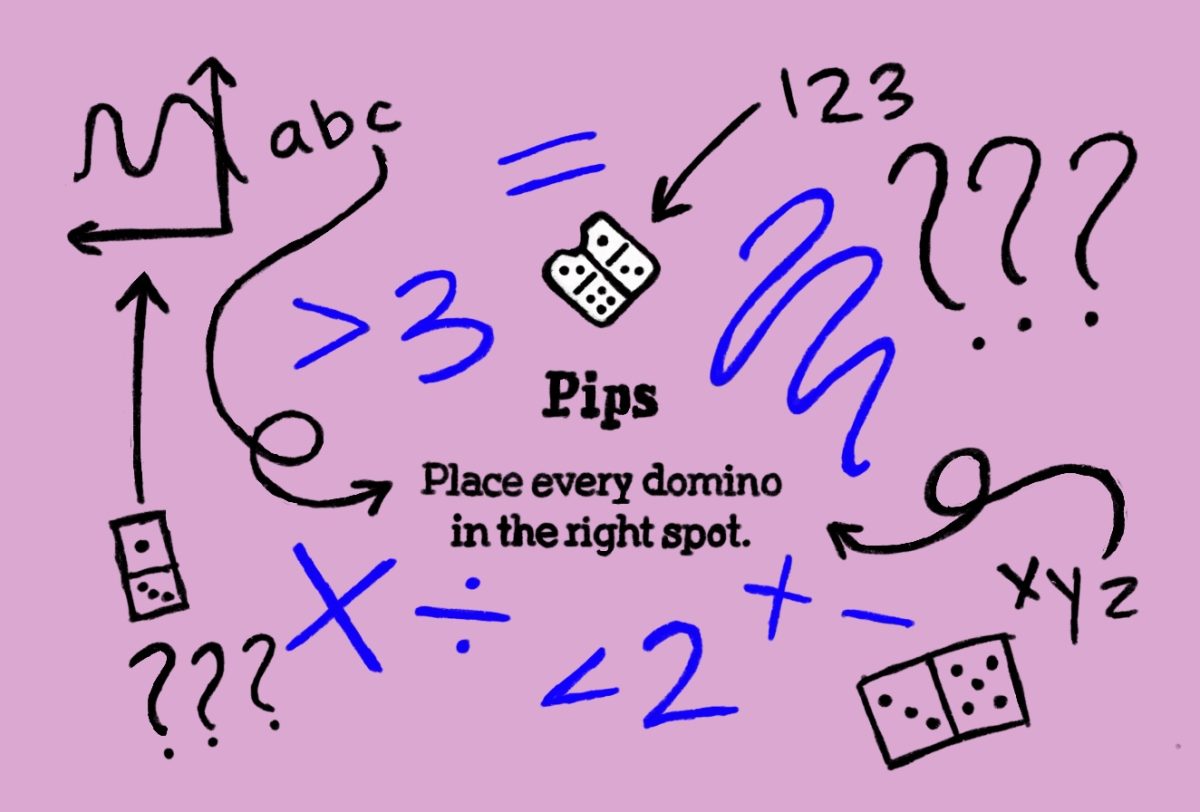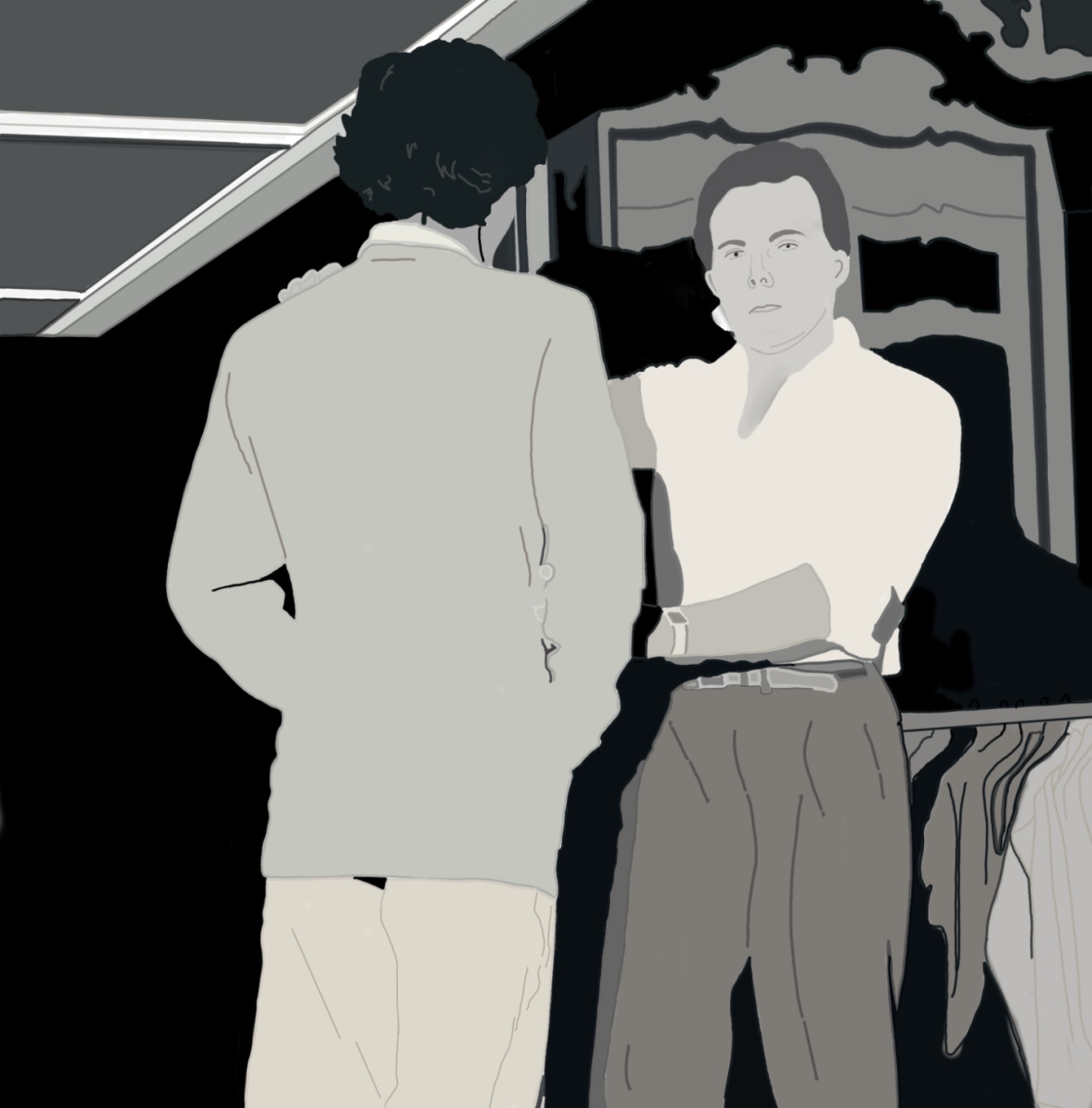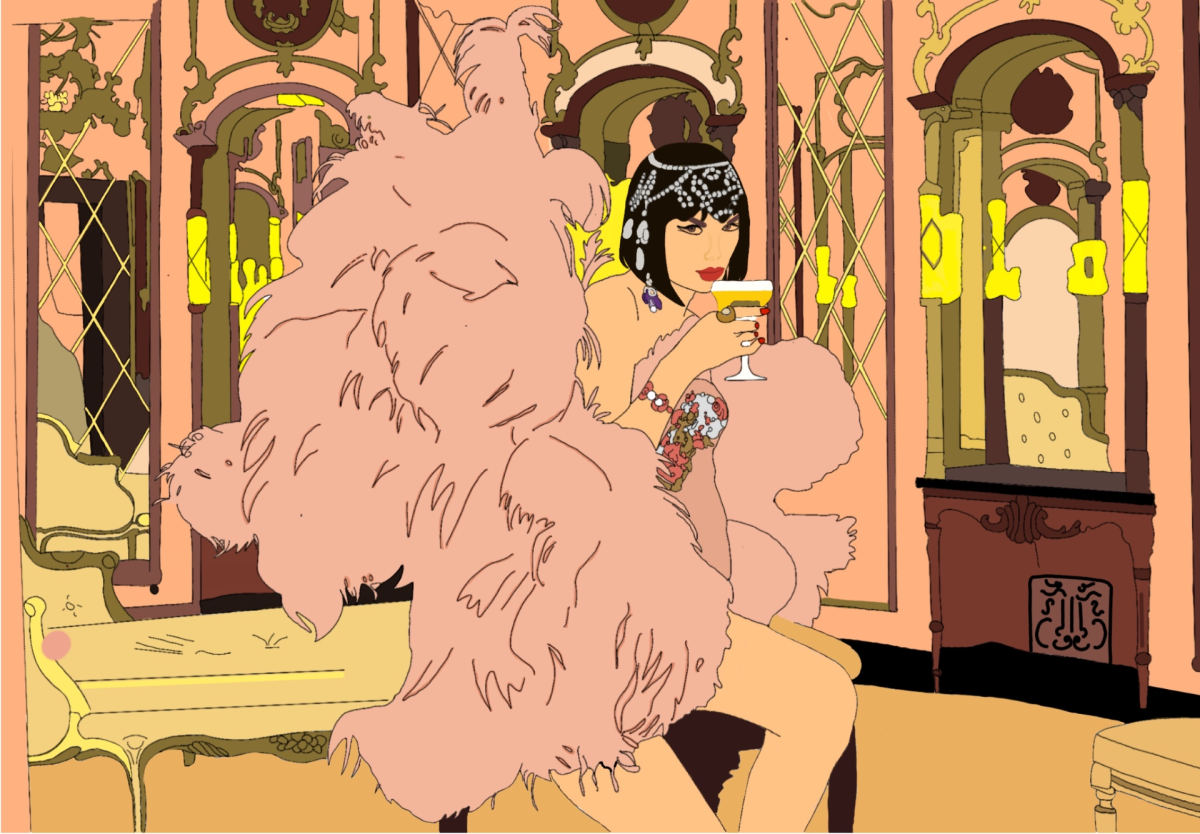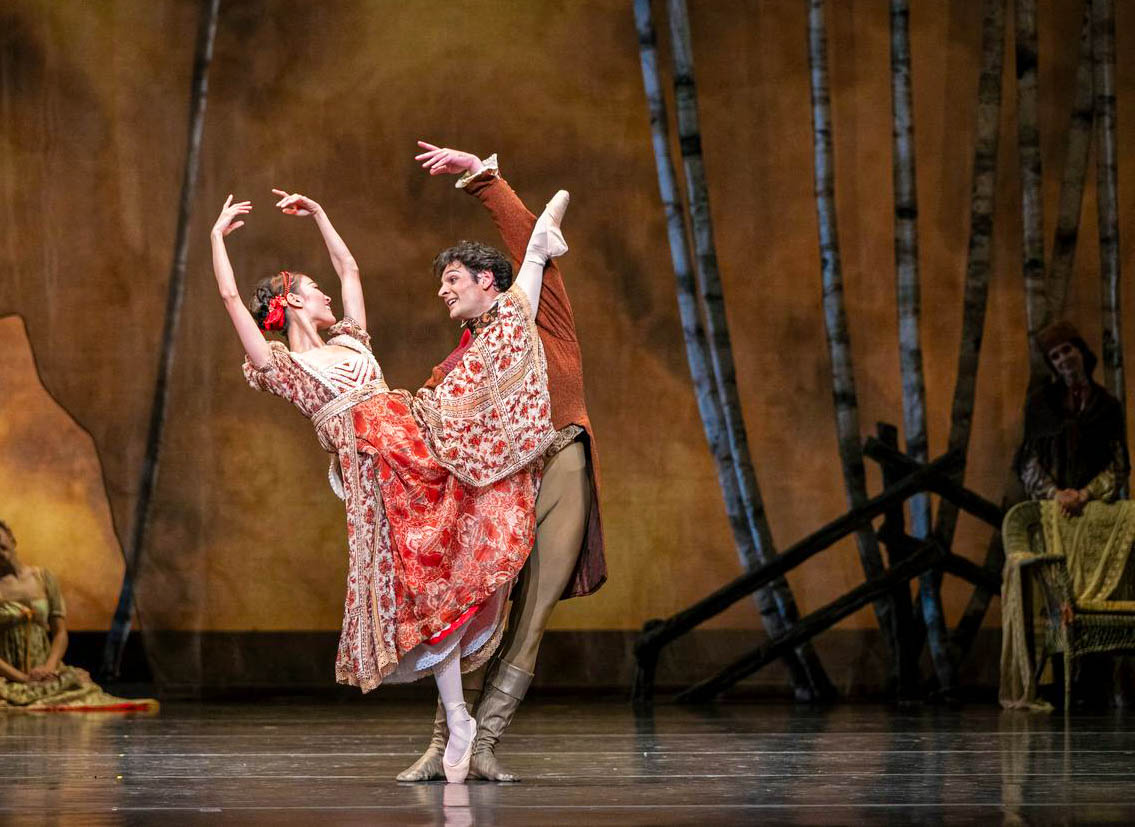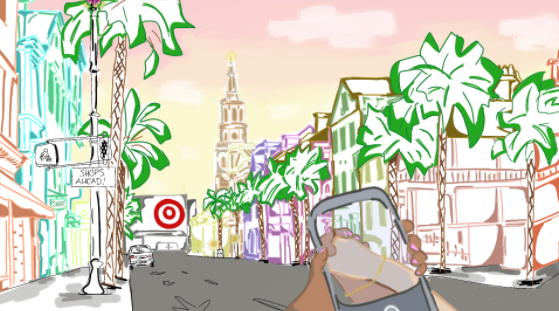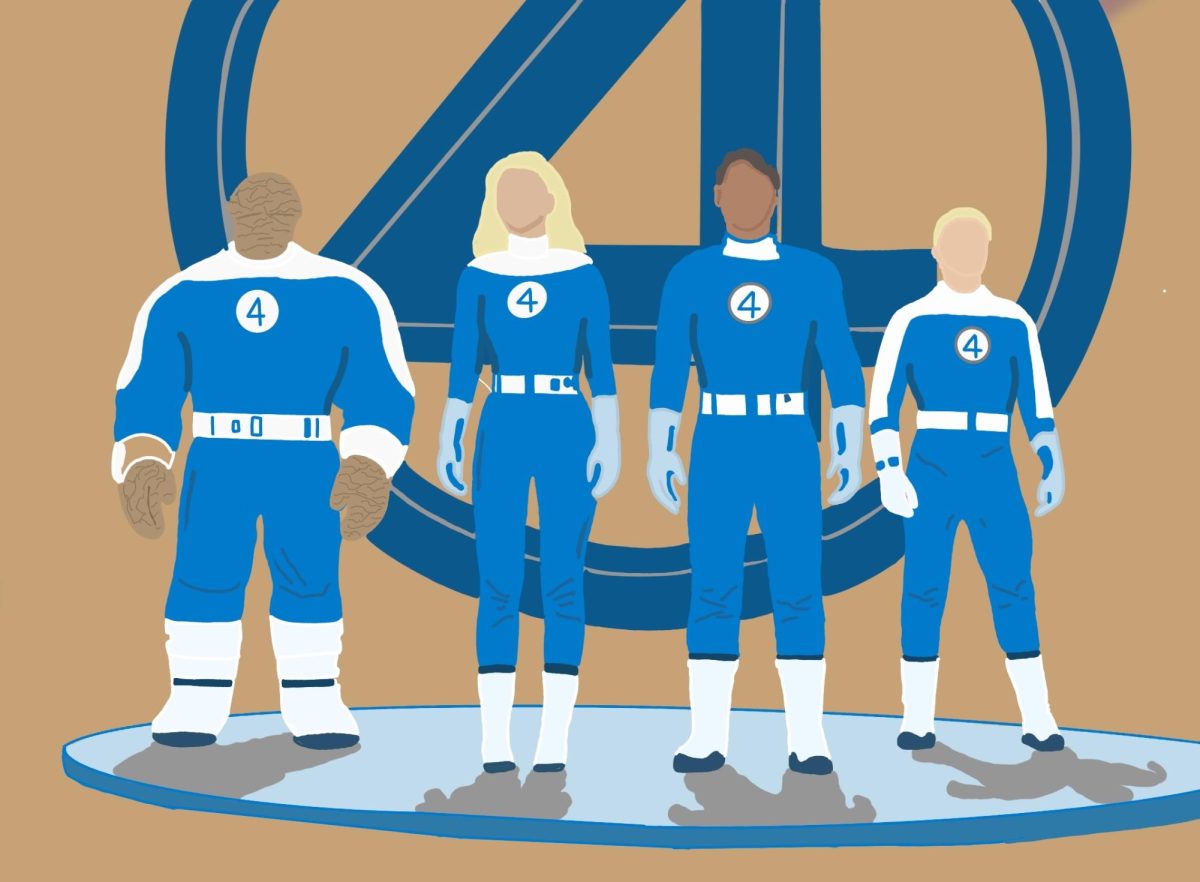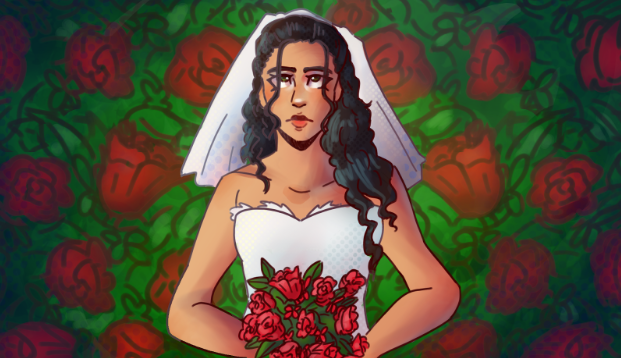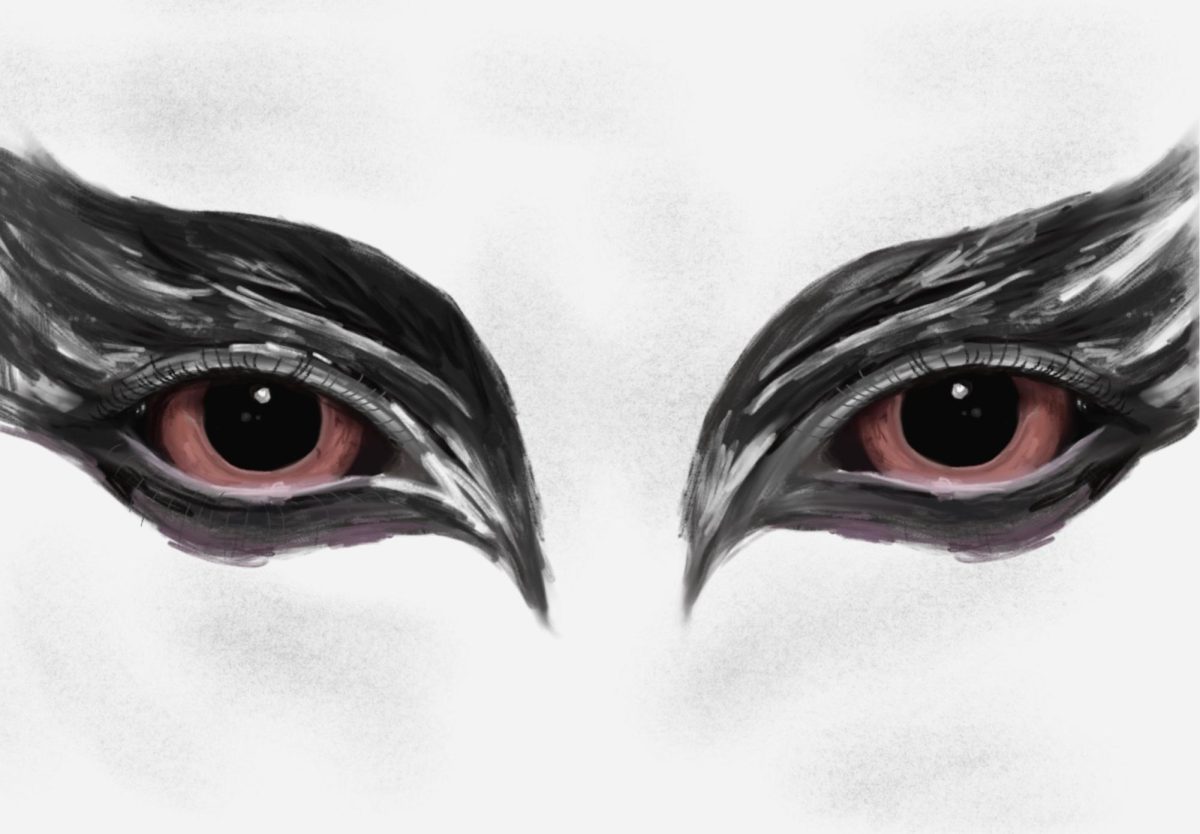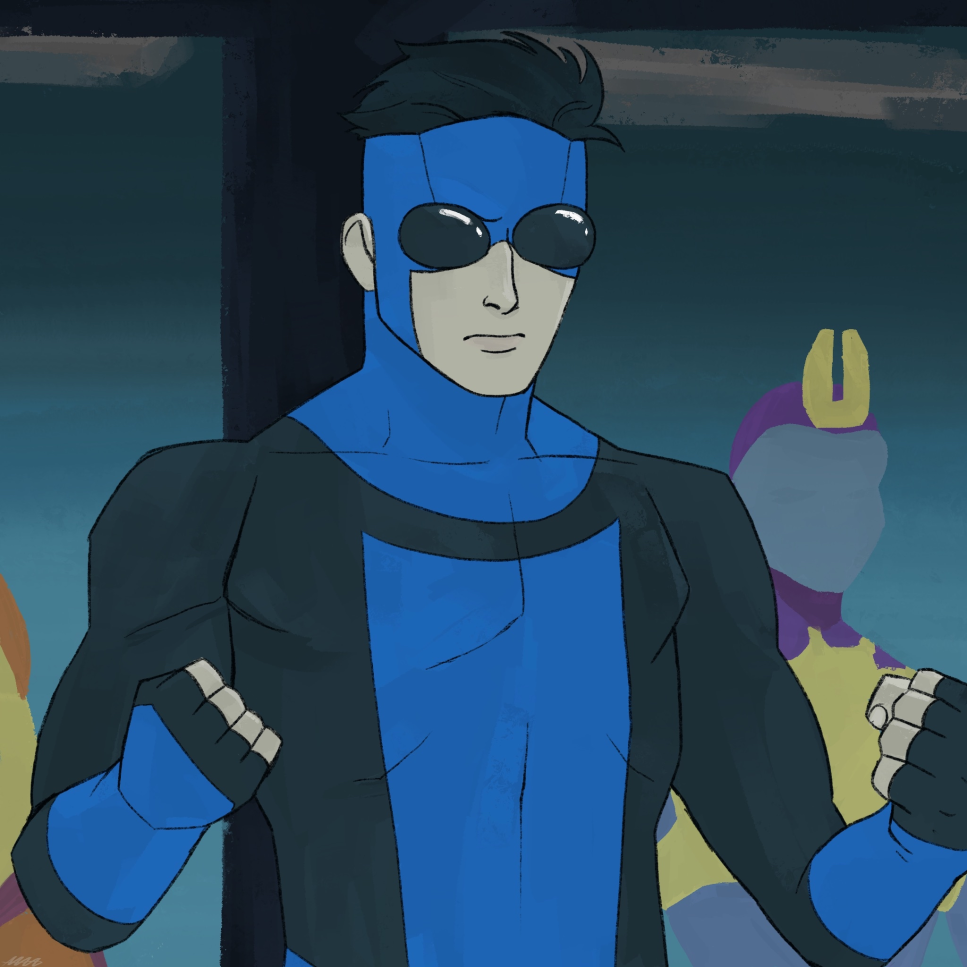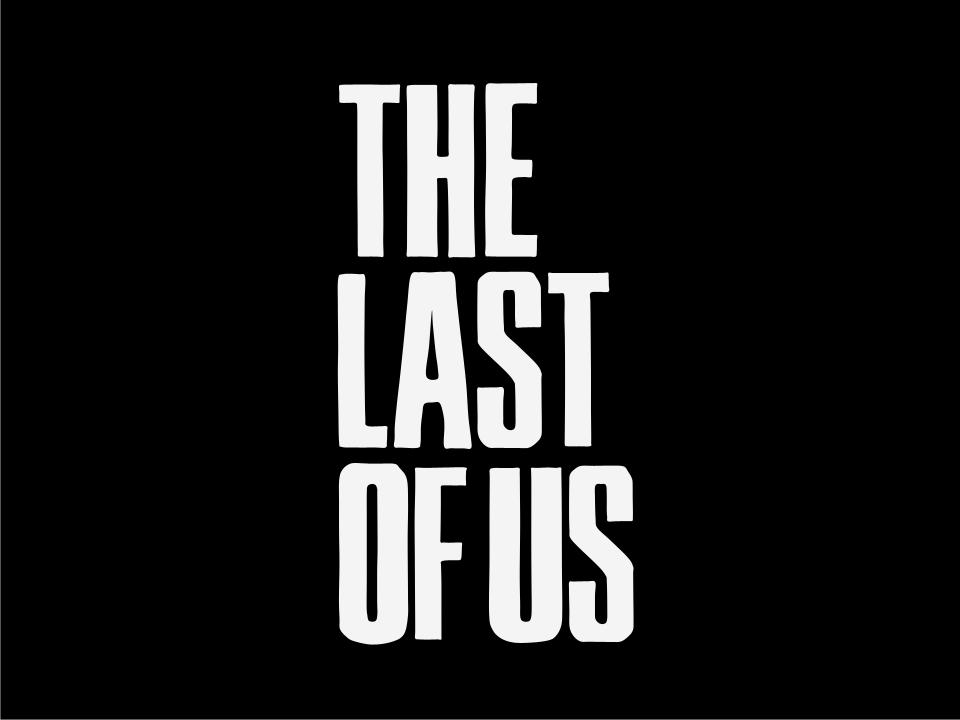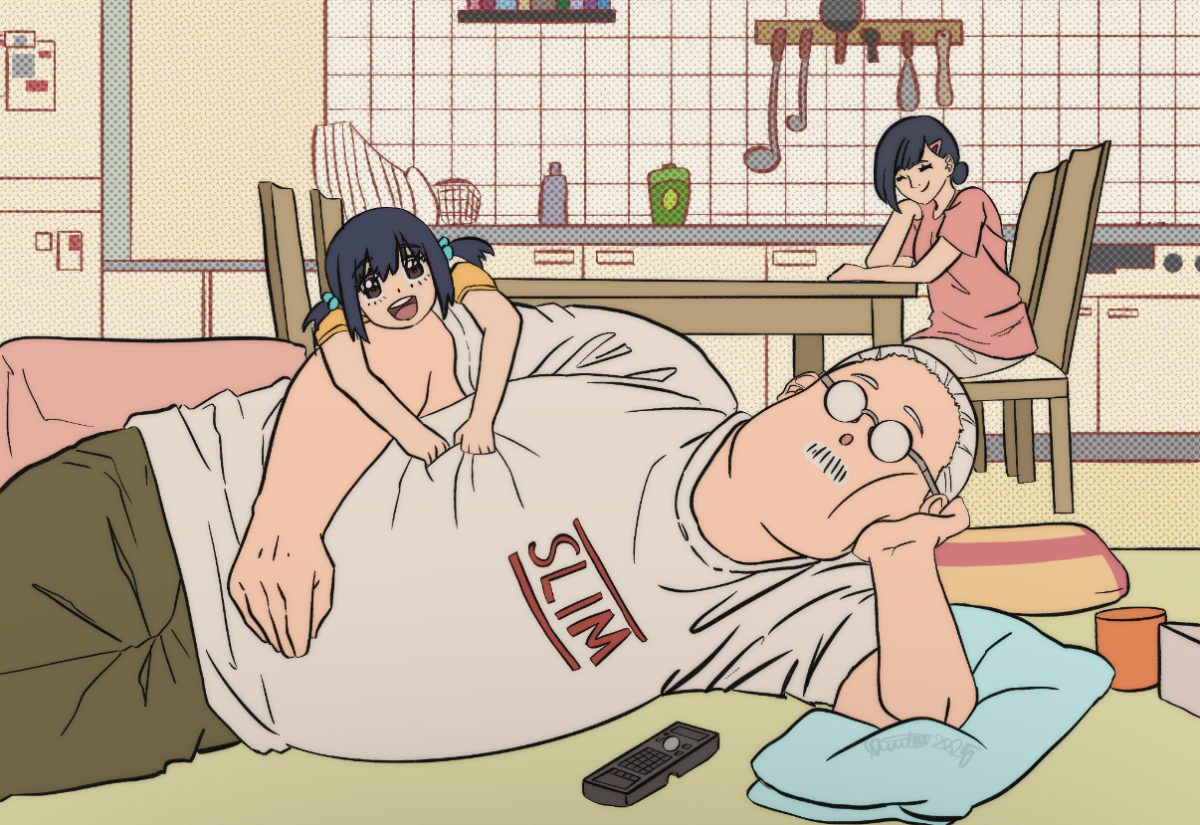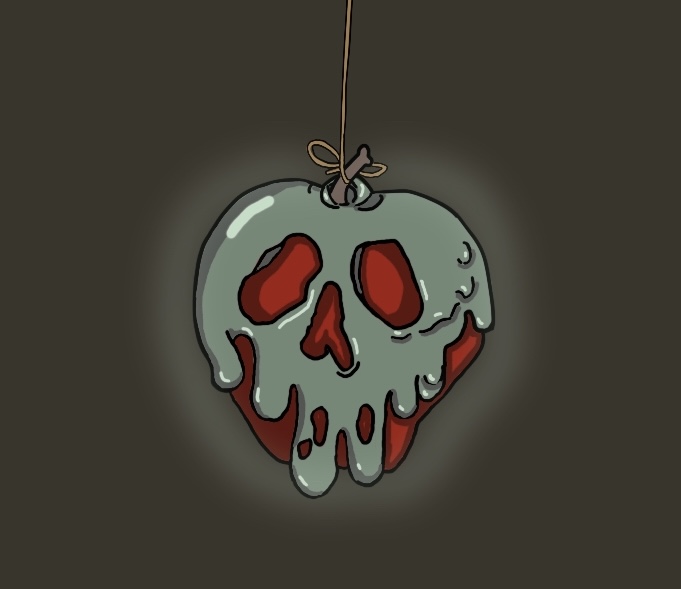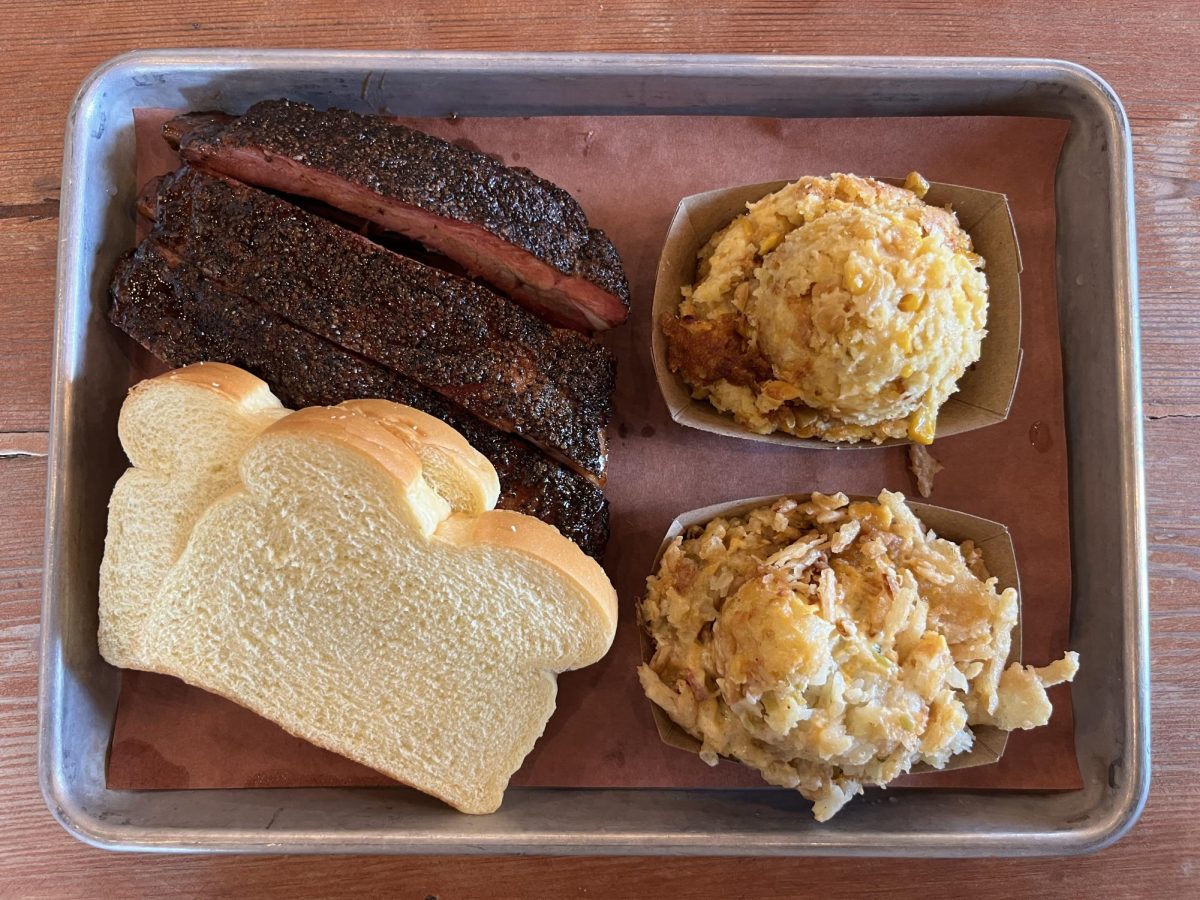Piercing red burned across the skyline as orange hues gathered over the neverending line of dunes. The entire landscape was silent; only the wind whistling over the hills could be heard. Rhythmic signaling interrupted the quiet.
Pshh thump pshhh thump
Without warning, the earth began to rumble.
The earth shook violently as something emerged from underneath the sand. Its body pierced through the land as it raced toward a shadowy figure awaiting it.
The figure stood still, hooks in hand, as he watched the incoming sandworm, ready for the perfect moment to ride.
The highly anticipated sequel to Dune, “Dune: Part Two,” finally came to theaters on March 1. Directed by Denis Villeneuve and distributed by Warner Bros. Pictures with a budget of $190 million, the film was shot entirely in IMAX, creating a new look for the series.
The movie picks off right where it left off in Dune, where Paul Atreides (Timothee Chalamet) and his mother, Lady Jessica (Rebecca Ferguson), travel across the desert planet of Arrakis. The House Atreties has fallen, attacked by their rivalries: the big bald Harkonnen led by Baron (Stellan Skarsgård) and his psychotic nephew, Feyd-Rautha (Austin Butler). It follows the harrowing journey of the pair as they unite with the Fremen people to wage war against the House Harkonnen.
Without a doubt, Dune 2 was better than the first. Maybe I was too distracted trying to figure out what was happening in Dune since it introduced such an intricate and complex plot, but I found this film much more entertaining. It transports you to an action-filled sequel and is so visually stunning that I could feel the tremor of power from each battle and sword fight.
From the first scene, my eyes were captivated by the wide screens projecting the crimson landscape of the desert planet Arrakis. While watching it in theaters, I forgot my true surroundings and couldn’t help but be fully immersed in the fantastical galactic realm of Arrakis. Captured by the dramatic plot and beautifully shot scenes, I was kept on the edge of my seat as the two hours and forty-six minutes flew by. Although sci-fi movies usually aren’t appealing to me, the cinematic experience of this film was something I had never seen before. Unlike Marvel’s vivid but tacky scenes illustrated with obvious CGI, Dune seemed so realistic and straight from the book series’ author Frank Herbert’s imagination.
The first opening line of the film is “Power of spice is power over all.”
And so it is, as it is the one thing every clan desires complete control over. However, this movie focuses more on the power of religion and its impact on society. While spice is addictive, the call to religion is even more potent. Religion is the key to gaining control in this film, and while Paul runs away from his prophesied role, his mother, Lady Jessica, has her own agenda: igniting a holy war, growing the fetus in her body, and making her son the perceived savior of the Fremen.
Admittedly, the movie moved at a slower pace in the beginning, which was hard to follow. That changed quickly, however, as it showed Paul’s development in adjusting to the Fremen’s culture and survival tactics. One of the best parts of watching Dune was witnessing Paul’s transition from a reluctant, tortured boy who did not accept the prophecies of his god-like future to a confident, powerful messiah figure. There was a huge shift in his attitude, which added to his complex character as neither a villain nor a hero.
From the start, Paul comes off as an eager but frail man wanting to fit into the lifestyle of the Fremen, and he wants to prove his worth. I loved seeing his boyish personality when Chani taught him to sand walk or when she helped him spend a night alone in the desert as a test to see his abilities. In those moments, he wasn’t the last heir to the House Atreides or the Messiah; he was just Paul.
One scene that will always resonate with me is when Paul rides the sandworm for the first time. He needed to prove his worth as the prophesied god to the Fremen and earn their respect. No one expected him to be able to do it, and I waited with bated breath as he climbed up the dunes to his fate.
This is definitely one of the most incredibly directed moments in a film I’ve seen so far. Anyone who’s watched Dune knows how powerful the volume can get, and this scene is no exception. When Paul jumps into the abyss of sand, desperately trying to hold onto the worm, I feel as though the entire theater is shaking with him. Denis Villeneuve and cinematographer Greig Fraser outdid themselves by executing each stunning scene with breathtaking color or black and white.
Even the black-and-white sequence, which exaggerated the Harkonnens’ ghost-like features, brilliantly amplified the horror of the fighting ring featuring Feyd-Rautha with infrared cameras. The sudden shift to scenes devoid of color created an intense atmosphere, demonstrating Feyd-Rautha’s dark history in violence.
In addition to the film’s main focus on the cinematic experience and beautifully shot fictional world, the relationships in Dune 2 were also perfectly portrayed.
An example of this is the relationship between Paul and Chani. On-screen, you can see their bond progress from friendship to lovers, something that is never as detailed in the books. Watching their bond come to life was so interesting and added a romance factor amid the chaos of action-filled politics. Timothée Chalamet and Zendaya played their roles brilliantly as two people who loved each other, but one chose to love power over the other. I felt an emotional attachment to them, especially towards the end when Paul gradually lost his humility once he drank The Water of Life, making him a completely different person. The worst part was seeing the hurt in Chani’s eyes as she witnessed someone she loved fall into the trap of power.
My one complaint about the first movie was that there needed to be more action. Dune 2 perfectly includes the action-filled battles that were missing from the first. There were both large-scale wars and hand-to-hand combat scenes that kept me glued to the screen. I was in awe as House Harkonnen sent armies of black-clothed flying soldiers battling against larger-than-life worms, unleased by the Fremen. The entire war felt like a fever dream; it happened so quickly, but I couldn’t look away.
Another combat that wasn’t as thrilling but just as climactic was the one between Paul and Feyd-Rautha. It was such a gripping scene that left you breathless, as it was a defining moment in the film. Lit by the setting sun behind them, their silhouettes stood still in fighting stances, facing each other with obstinate expressions. At that moment, I didn’t know if Paul or Feyd-Rautha would emerge victorious. I was again at the edge of my seat, anxiously watching as the sound of swords slashing across another echoed in the theater.
It’s hard to imagine something to criticize about Dune 2, but I found the ending too abrupt. The film ended shortly after the combat between Paul and Feyd-Rautha, and the audience was left still processing that outcome when the curtains closed for the night. It was too fast a cut-off, and there should have been a gradual anticipation of the end.
Ultimately, Dune 2 is a vivid, glorious experience that leaves you walking out of the theater ready to sand walk with the Fremen or battle against the Harokenen. Watching a 60-year-old book series come to life in such an uncanny resemblance to what I imagined while reading the books was breathtaking. I noticed several older attendees at the theater and realized that they had been waiting for this rendition of a childhood favorite series to come to life. Whether you grew up reading the series or just started to get into this complex but exciting world, Dune 2 is no disappointment.


